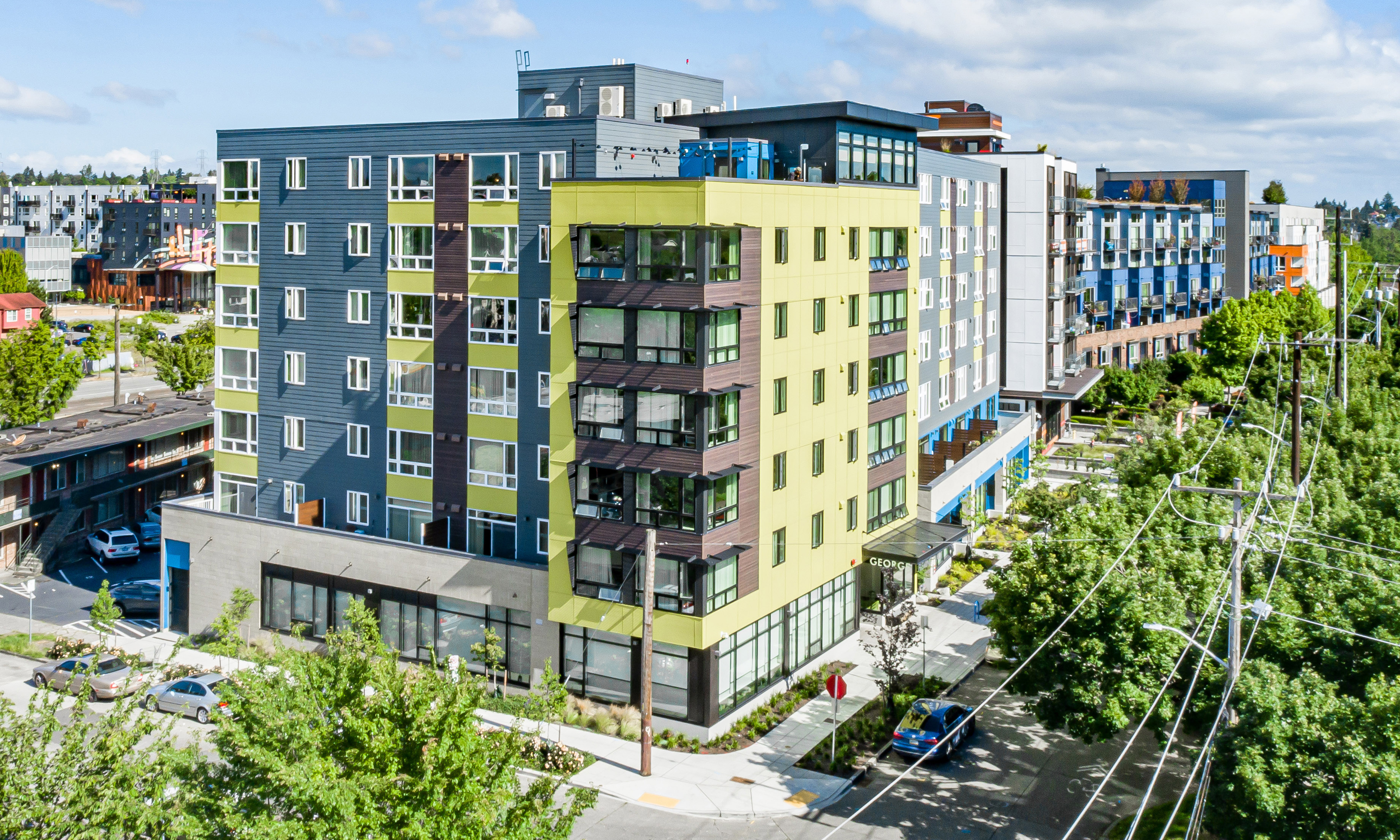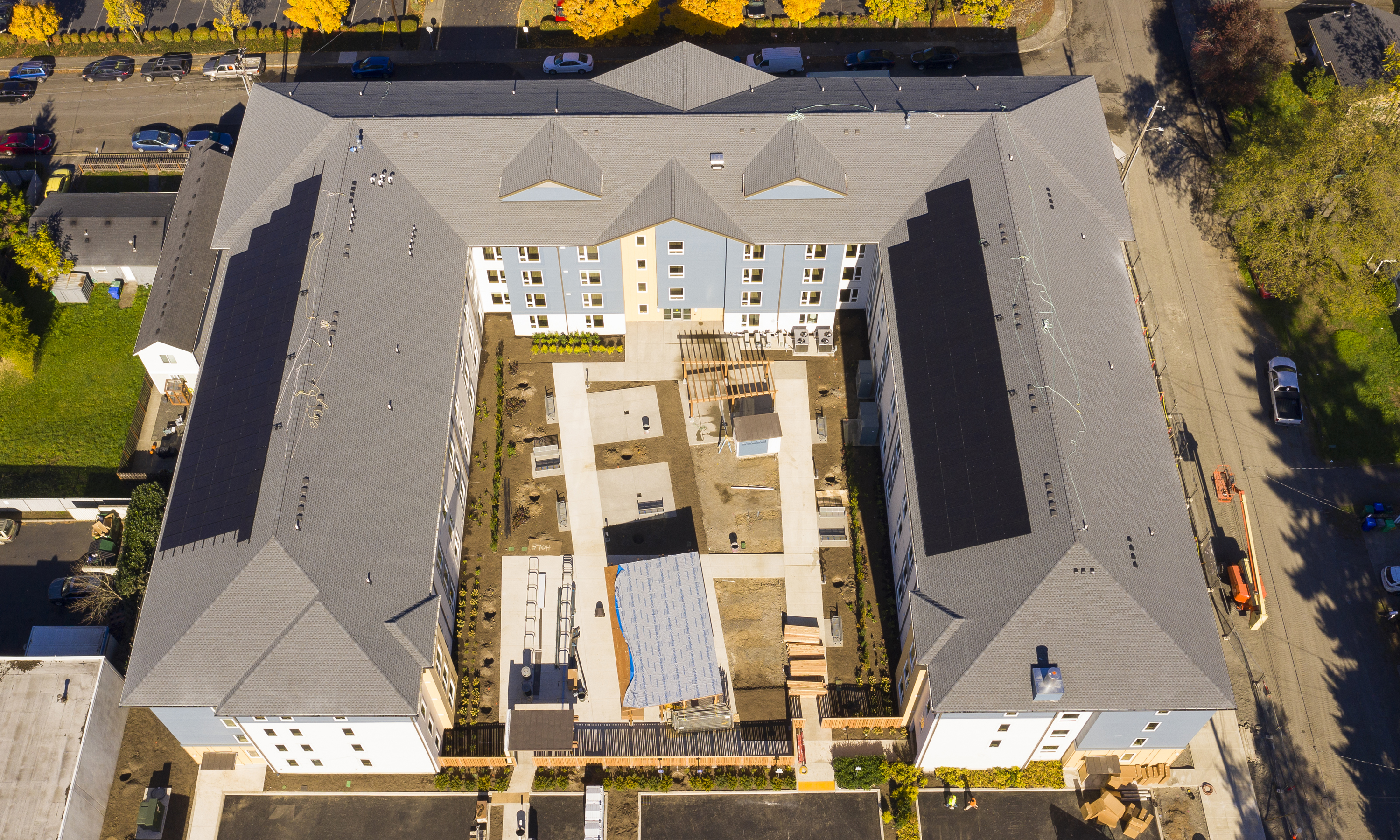Cost-Efficient Design & Construction (CEDC) Part 2: Core principles and concepts
Exploring a different path to more, better housing
As we learned in the first part of this three-part series, Cost-Efficient Design & Construction (CEDC) posits a set of working principles that we at Walsh feel will lead to more inherently cost-efficient buildings. We have seen results of 10-25% cost savings from the non-optimized units in construction. Below are the core principles of CEDC.
Core CEDC Principles
- Strive to “keep it simple”
- Larger projects = economy of scale
- Seek out unencumbered sites
- Efficient building plans (net to gross area >80%)
- Efficient dwelling unit plans (narrow aspect ratio)
- Simple and compact forms
- Building/unit layout on two-foot module
- Optimize structure / framing
- Floor-to-floor heights set for drywall (increments of 48”, 54”, and 96”)
- Stack the units
- Compact plumbing layouts (back-to-back is most ideal)
- Avoid cantilevers (in wood-framing)
- Avoid steel (yes it is possible!)
- Disciplined approach to windows
- Standardize & repeat typical elements
- Seek out all opportunities to prefab
Reduce Variation
“Reduce variation” is one of the key concepts underlying lean production methods, borrowed from Six Sigma thinking. Reducing variation is necessary in production processes to reduce costs while maintaining the requisite quality and consistency of a given product. However, it is clear to anyone involved in the industry that every affordable housing project is designed nearly 100% from scratch and the result is a highly unique building, fully customized to its site and program. Unit plans change from project to project, the stairway plans are almost always different, the corridors, the elevator shafts, trash chutes, etc. The floor framing runs parallel to the exterior wall on one project and perpendicular on the next. Mechanical equipment varies as does the approach to routing ductwork and piping. Fire and sound-rated assemblies vary. We lack an integrated platform of standardized elements, and a coordinated assemblage methodology. Some of this is due to programmatic or regulatory necessity, but much of it is due to complacency and a lack of discipline. This tendency to build projects that are 100% prototypes is a major factor contributing to rapidly increasing costs, and more broadly, the lack of productivity growth in construction.
The 80/20 Concept
As part of our CEDC approach, we’ve developed the 80/20 Concept: 80% of the elements that constitute an affordable housing design are–or could be–the same or highly similar, thus reducing the almost mind-numbing variation that typically occurs between projects. These are elements that for the most part are hidden or buried behind other elements; for example, structure, insulation, mechanical and electrical systems, drywall, firestopping, and acoustic detailing. If the project team can optimize the design of those elements and begin to use them more widely as standardized elements, we have the opportunity to bring costs down significantly, through reduced material use, improved constructability and productivity, and, more generally, a reduction in complexity and uncertainty for the trades involved. The achieved savings can then be used for the inclusion of more of those elements that strongly contribute to architectural quality and building performance: the other 20%. This refers to the form, articulation and exterior expression of the building, the cladding materials or interior finishes, daylighting and natural ventilation, or amenities such as balconies or roof decks. The key idea is to standardize (and then optimize) +/-80% of the basic building and reduce costs there and use the other +/- 20% for the custom elements that allow for adapting the building to its unique site and program while providing individuality and character.
CEDC in Detail: Unit Design and Structural Optimization
The approach to unit layout, unit modularity and structural concepts provides several good examples of the optimization process at work in CEDC. First, there is a focus on the aspect ratio of the unit plans. The plans must be large enough to accommodate all the spaces that go with a particular unit type, such that they are functional and livable. That said, unit plans that are narrower and deeper while accommodating the required spaces and functions will tend to provide more efficient building blocks for affordable housing design compared to wider, shallower units of the same size. The narrower units will require less exterior wall enclosure and less corridor area than the wider units. Exterior wall is an expensive component at our buildings, therefore reducing exterior wall quantity can provide cost benefits, not to mention other benefits in terms of energy performance and long-term maintenance requirements. Corridors are not as expensive, yet they mostly function simply as a means to access the apartments. Reducing the quantity of corridor area is typically only beneficial to a building’s cost efficiency.
A typical one bedroom unit is commonly designed at 24-26 feet wide, whereas an optimized one bedroom unit plan can be developed with a width of 22 feet. This relatively straightforward optimization will result in 8-15% quantity reductions at the exterior wall and the building corridor. Combined with a sectional optimization to reduce typical building floor to floor height from 10-3” (with 9-foot ceilings) to 9-1” (with 8-foot ceilings), the exterior wall quantity reduction can increase to more than 25%.
In the last installment, Part 3 of this three-part series, we will explore case studies and how these principles and concepts have proven successful.


